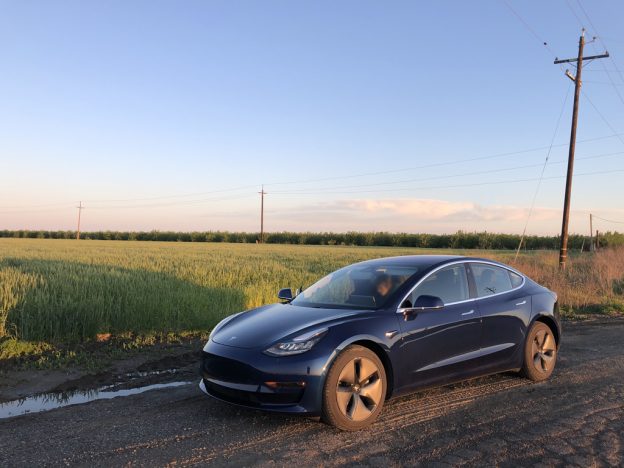February 2021
The idea that EVs make just as much pollution as gas-powered cars is not new. It’s often brought up as a reason to keep pumping oil out of the ground and gasoline into cars. But believe me it’s an old idea, and it’s been addressed many, many times. We should, of course, all understand the mix of energy sources used to produce electricity, the emissions that come from using different sources, and the impact of emissions on the air we breath. But, the idea that EVs pollute “just as much as gas-powered cars” is not true.
For those who’ve been driving electric for a while this idea or question keeps popping up no matter how many times you show with real data, numbers, facts, and science that EVs are cleaner. Partly, this is because more and more people are considering EVs today and some people really do want to know.
So let’s look at this again by first examining the energy sources that power the U.S. electrical grid today. Coal is no longer king. Cleaner burning natural gas is the largest source of power but renewables have been steadily increasing year by year, and in 2020 surpassed coal and nuclear power.
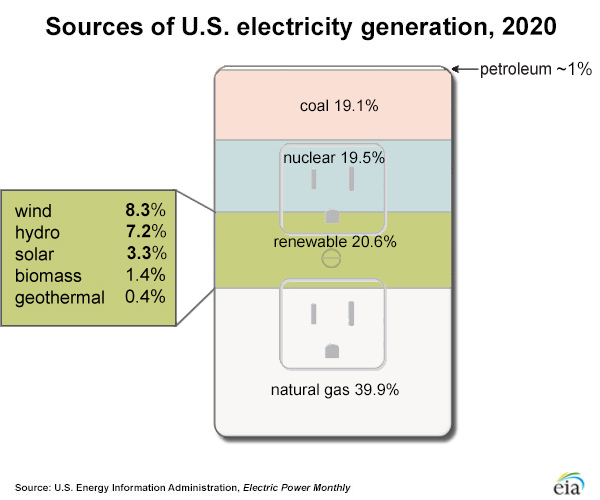
Some regions of the United States are cleaner than others. Regions that have lots of hydroelectric power, wind, and solar have cleaner grids. But some states still use quite a bit of coal. So, where you charge in the U.S. does matter. How much does it matter? Let’s find out.
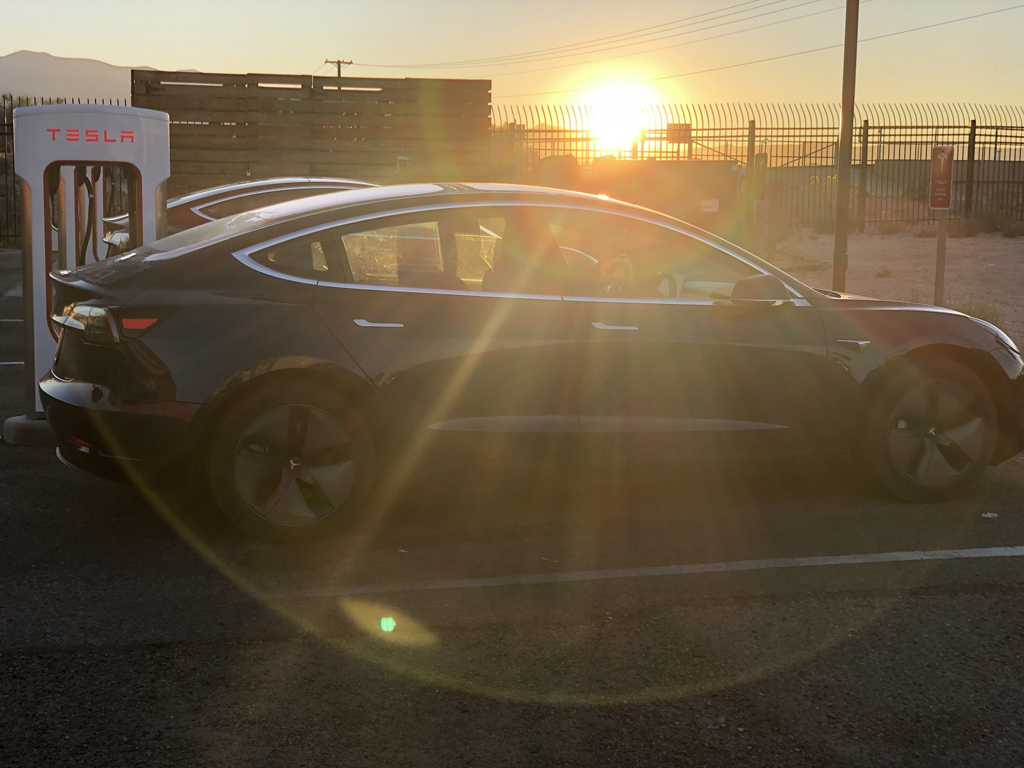
The Union for Concerned Scientists (UCS) keeps track of power sources and emissions for the U.S. electrical grid. Their data comes from Argonne National Laboratory, the EPA, and other sources such as the US Energy Information Administration. Their detailed analysis includes energy used from mining, transportation of fuels to power plants, and line losses. Their published data is updated over the years.
The UCS maps below show how much pollution an EV makes compared to a conventional car, and how that has improved over the years. So, in 2009 charging an EV in California made pollution that was equivalent to driving a hypothetical car that got 78 MPG – in other words a lot cleaner than the average 25 MPG car. But the grid keeps getting cleaner. In 2018 an EV charged in California was like driving a 122 MPG car.
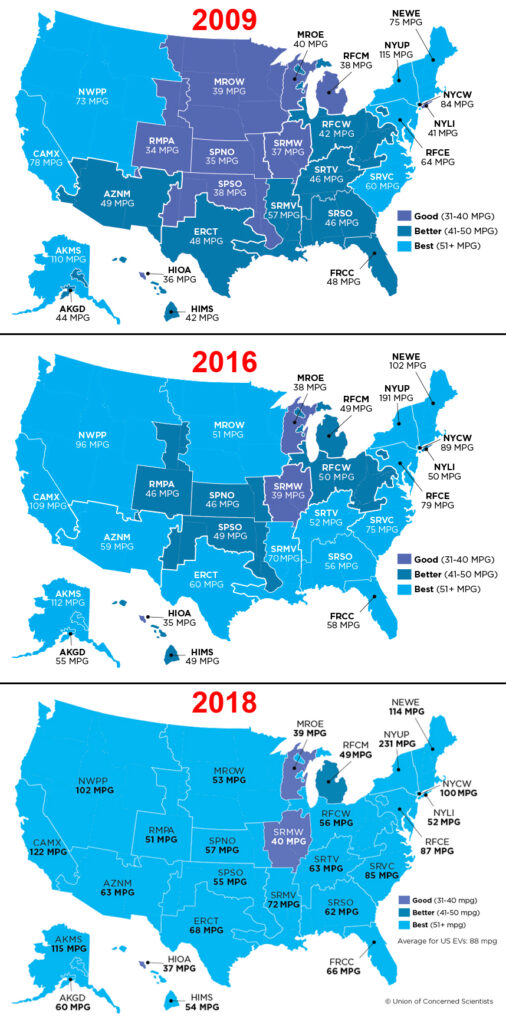
UCS has another tool for comparing the emissions from charging an EV in your area to the emissions of a gas-powered car that gets 29 MPG. Click the link here, enter your zip-code, choose a specific plug-in car and check out the results.
Below are screen shots from a few examples. First, I entered my zip code and compared the emissions from charging a Model 3 in my town to the emissions of a 29 MPG car. As you can see in the top row, charging my car produces 73 grams of CO2 per mile of driving. In the second row you see that driving a 29 MPG car produces 381 grams per mile. Big difference isn’t it? Driving on gas is 5X worse!! Next row, a plug-in hybrid like my Mom’s Honda that drives 40-50 electric miles then switches to gas averages 173 grams of CO2 per mile – half the pollution of a gas burner. Bottom row shows emissions from the average EV on the market today: 89 grams CO2 per mile. (those interested see note on CO2 at the bottom)
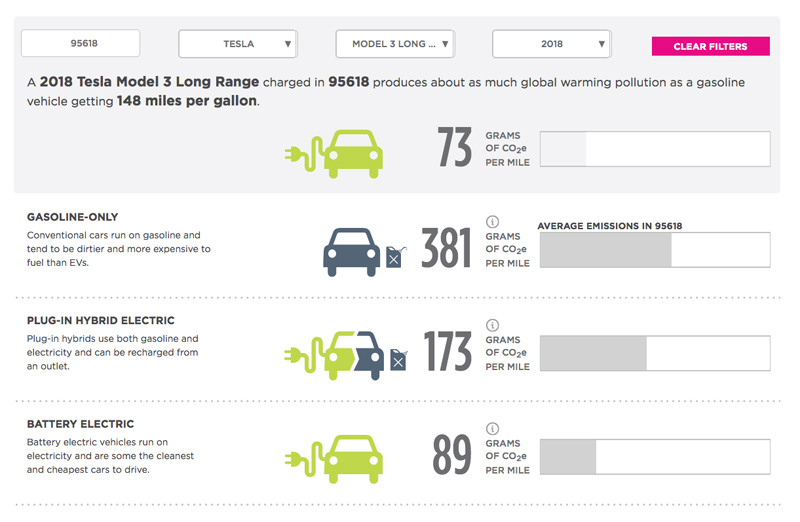
What about other regions of the country? Below you see that charging an EV in Washington, NJ produces 101 grams CO2 per mile compared to 381 grams per mile for the 29 MPG car. Pretty good, isn’t it? EVs in Washington, NJ are almost 4 times better.

What’s a best case scenario? Consider Buffalo. NY state gets 33% of it’s electricity from nuclear power and 29% from renewable sources like hydroelectric power. Check it out below: 38 grams of CO2 per mile to charge an EV in Buffalo versus 381 for that 29 MPG gas burner. HUGE difference. EVs are 10X better in Buffalo. 10 times better!!
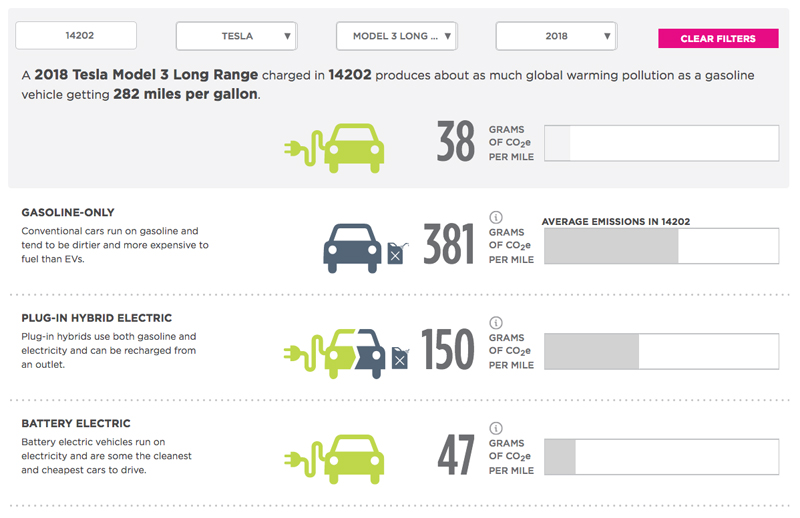
But what about worst case scenarios? The major source of electricity in Hawaii in 2019 was petroleum (63%), with renewables contributing 21% of the grid’s power. Hawaii does not have it’s own fossil fuels and imports energy by container ship over considerable distances. So in addition to the carbon released by burning petroleum to produce electricity, fossil fuels are also burnt to transport the petroleum to Hawaii. It all adds up. Still, in Honolulu a Model 3 would generate 40% fewer carbon emissions than a 29 MPG car – 238 grams of CO2 per mile to charge an EV in Honolulu versus 381 for that gas burner.
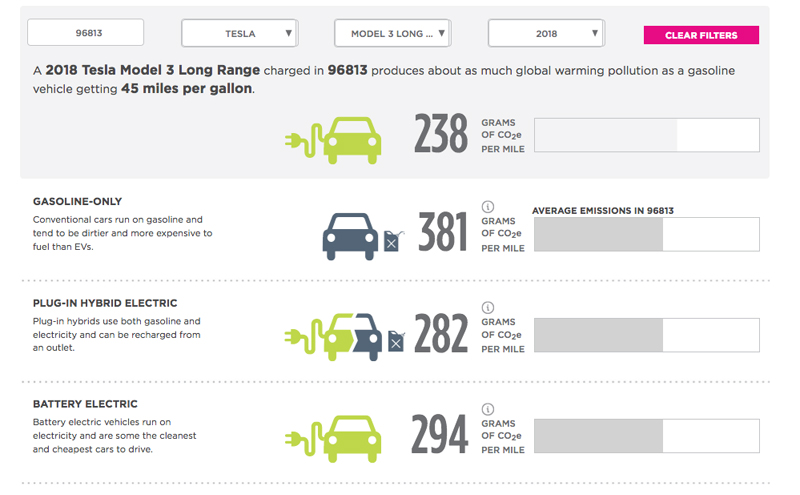
In the continental U.S., Denver is in a region that produces significant carbon emissions from electric generation. As expected it’s worse than California or NJ, but at 171 grams CO2 per mile, it’s still 2X better than driving a 29 MPG car. Not bad and a lot cleaner.
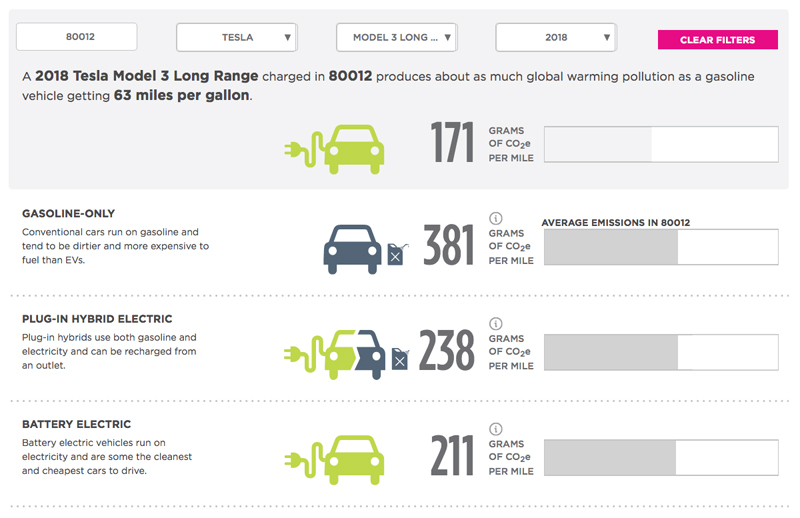
And lastly, just for fun, what about charging on Drayton Island, Florida? Here’s the data: 134g CO2 per mile for charging an EV versus 381 per mile for that 29 MPG gas burner. Almost 3X better.
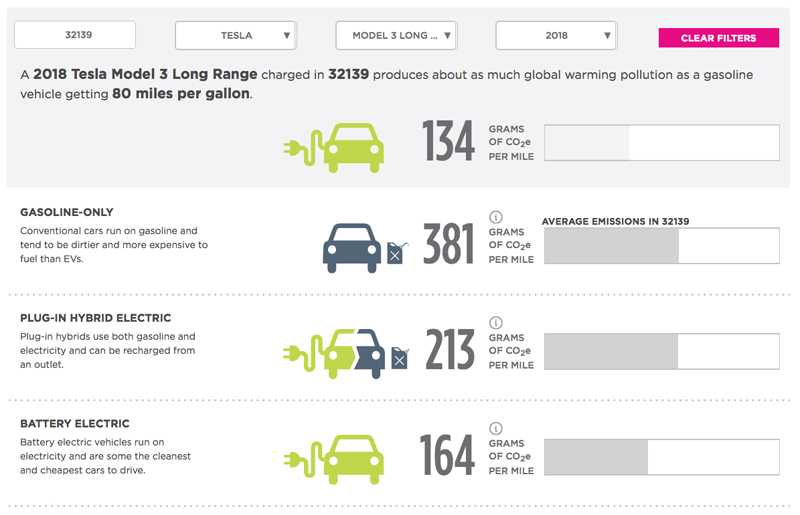
Road Trips?
People have asked me, “Don’t you have to charge like 3 hours every time you stop on a road trip?” Yes, we go on road trips. No, you don’t charge for 3 friggin hours. I use A Better Route Planner to calculate routes, driving time, and charging time for road trips. What about a 1000 mile road trip from New Jersey to Drayton Island, Florida? How would that work? ☞ about 90 minutes for charging along the way.
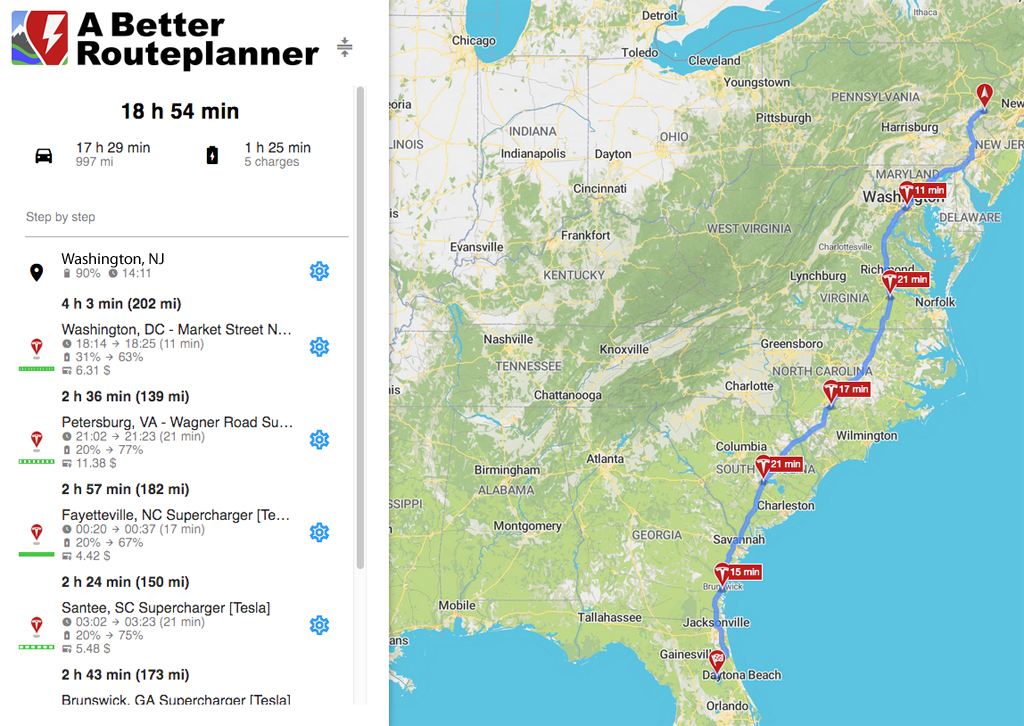
Charging stops are usually located in plazas with stores, shops, cafes, restaurants. But if you’d rather just sit there and rest, you can do that too.
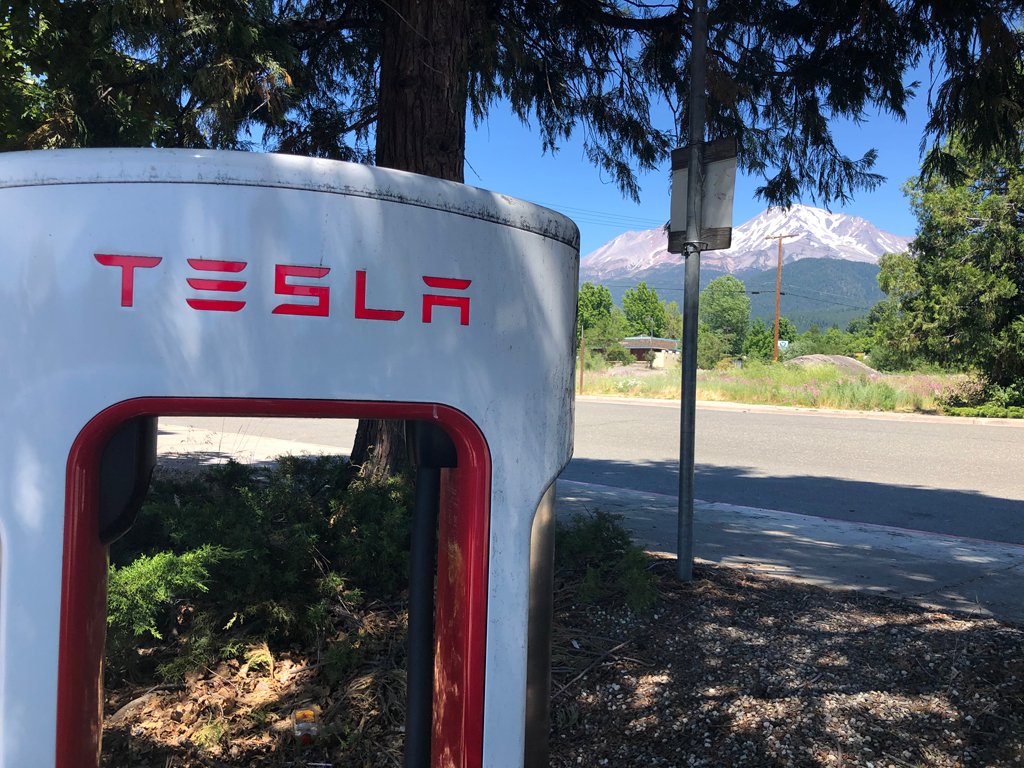
Why Bother?
We all know pollution isn’t good for us but here’s the thing: we act like the atmosphere is a limitless reservoir and we just keep pumping pollution into it every single day. The average person in the US drives about 14,000 miles a year; The average new car gets 29 MPG; Each gallon of gas burned pumps almost 20 pounds of CO2 in the atmosphere; and The average person pumps over 200 pounds of CO2 into the atmosphere every single week. 200+ pounds per person. Every week. We can do better.
Summary
- EVs are cleaner than gas burning cars. It’s not even close.
- EVs get cleaner every year because renewable sources used to produce electricity – wind, solar, hybrid electric/gas plants – increase year by year.
- Companies like Tesla already have a nationwide quick charging grid that allows you to charge quickly on road trips to just about anywhere. Other companies are catching up.
- You only need 90 minutes of charging for a 1000 mile road trip. I like to stop for 30 minutes every 3 hours, I find it keeps me alert during a long day of driving.
- Switching to a fully electric car or a plug-in hybrid like my Mom’s Honda Clarity PHEV will make a big difference. It’s time to act. We all gotta pitch in and do what we can.
* C02 is not the only gas emission from burning fuels but it is the major component among gases that trap infrared heat in the atmosphere.

